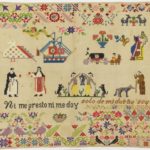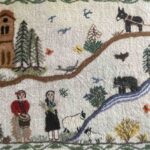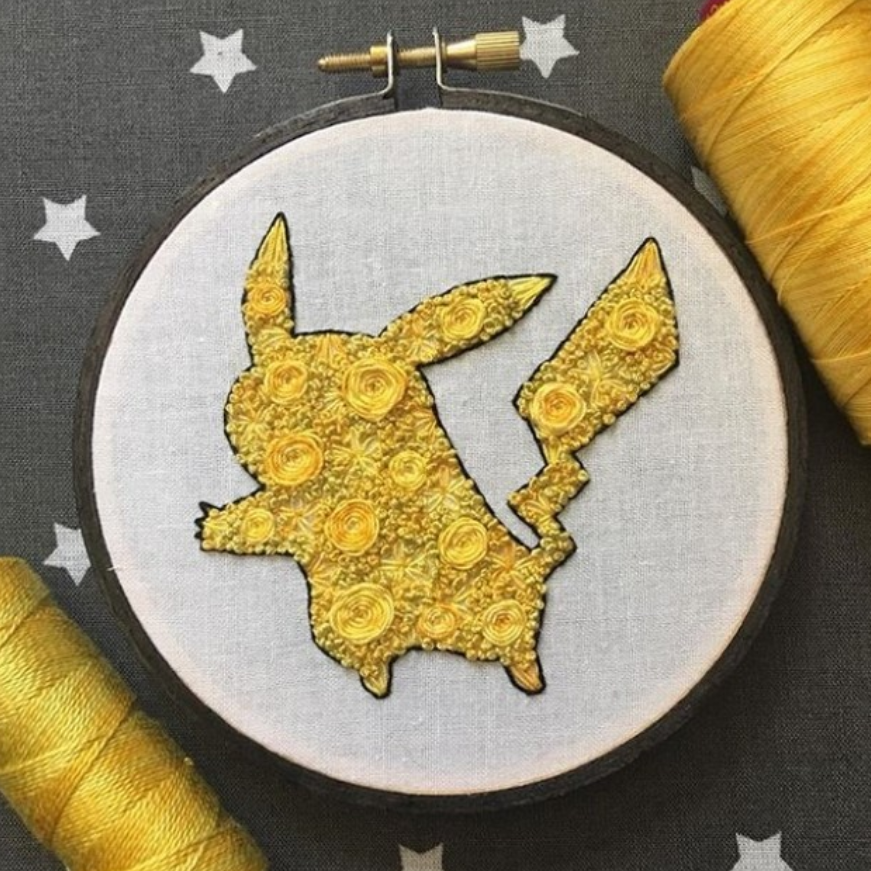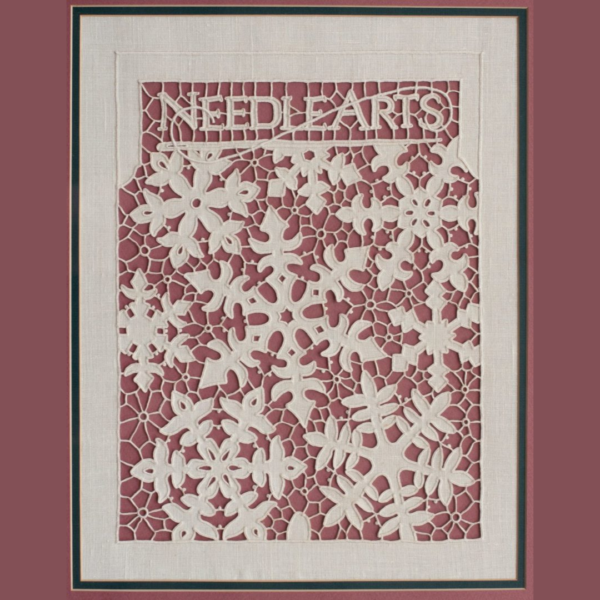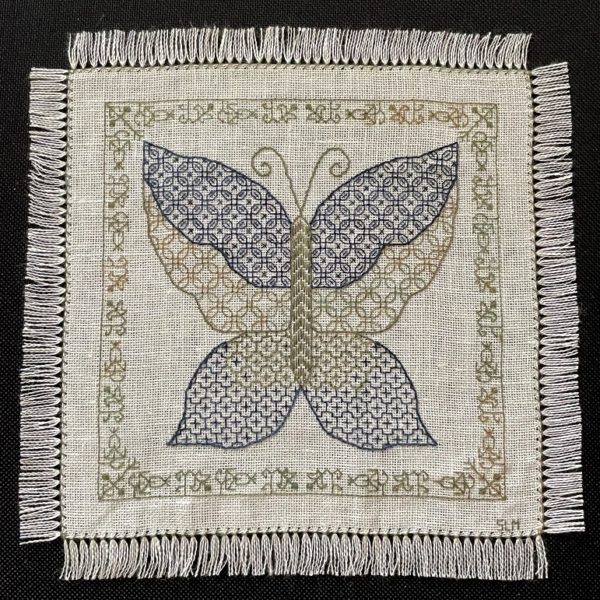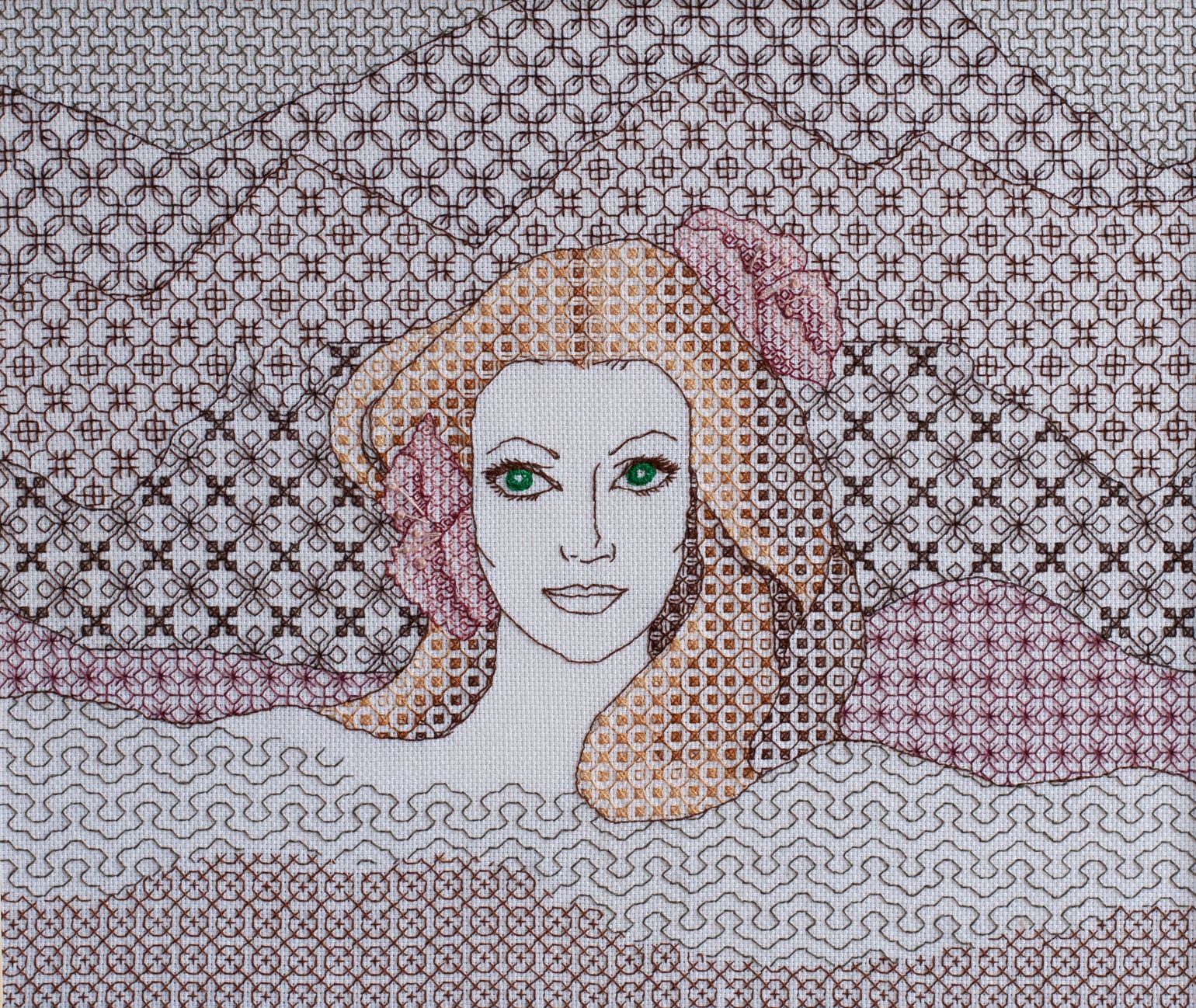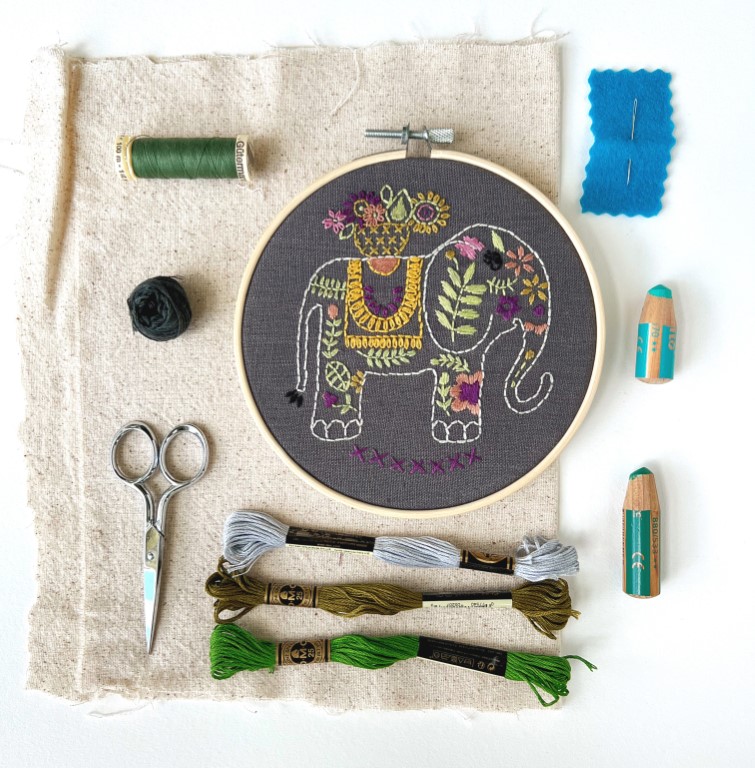Technique: Colcha
Place of Origin: Southwestern United States, specifically northeastern New Mexico and southern and southeastern Colorado
Earliest known date: uncertain, early surviving examples date to 1700s
History: The history of Colcha embroidery is circuitous and uncertain. While contemporary surviving examples of Colcha embroidery certainly hail from areas of northeastern New Mexico (Taos, Truchas, and Cordova) and southern Colorado (San Luis Valley), historians don’t agree on Colcha’s original source.
Some believe Chinese silk embroidery, with its similar laid stitch techniques, influenced early Colcha when it was imported into Mexico. Others have pointed to Spanish origins, with an even older history tracing back to Persia and Suzani textiles. The techniques then followed early Spanish settlers as they made their way north, into the southwestern United States. The designs and motifs themselves undoubtedly and unsurprisingly reflect traditional Spanish and Mexican embroidery styles. All agree that Colcha is a folk art that today reflects the traditions and culture of the southwestern United States.
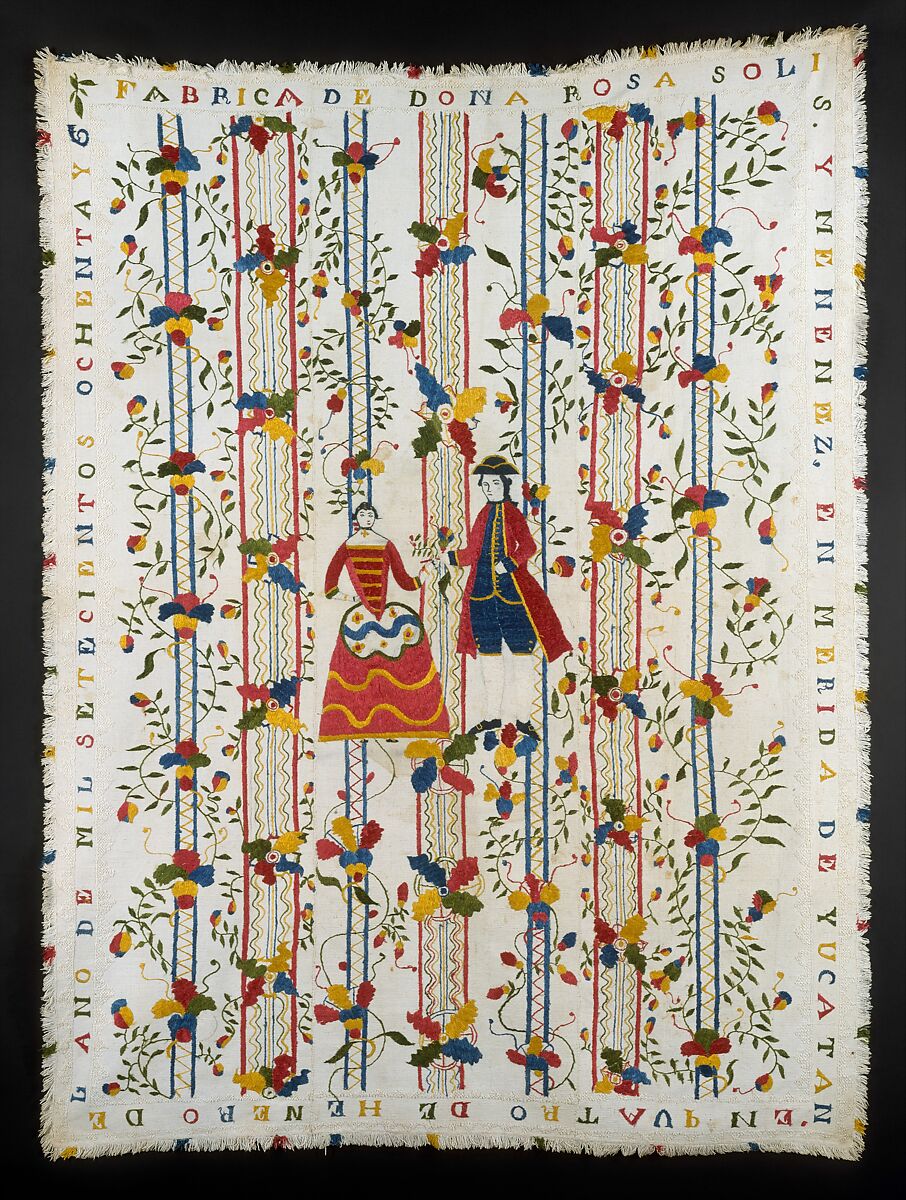
Materials, Techniques, and Stitches: The colcha stitch is a self-couched stitch, with short tying stitches laid at a 45 degree angle, in varying lengths and directions. Colcha was worked on either cotton twill (called cottonilla, and likely an imported material) or finely woven wool material (called sabanilla, which offers several translations: small sheet, altarpiece, piece of linen, and headpiece). The stitchwork itself was performed with fine woolen thread. Wool for both the sabanilla as well as the thread came from the fleece of Churro sheep, which were brought to America by the Spanish. This style is sometimes referred to as wool-on-wool Colcha.
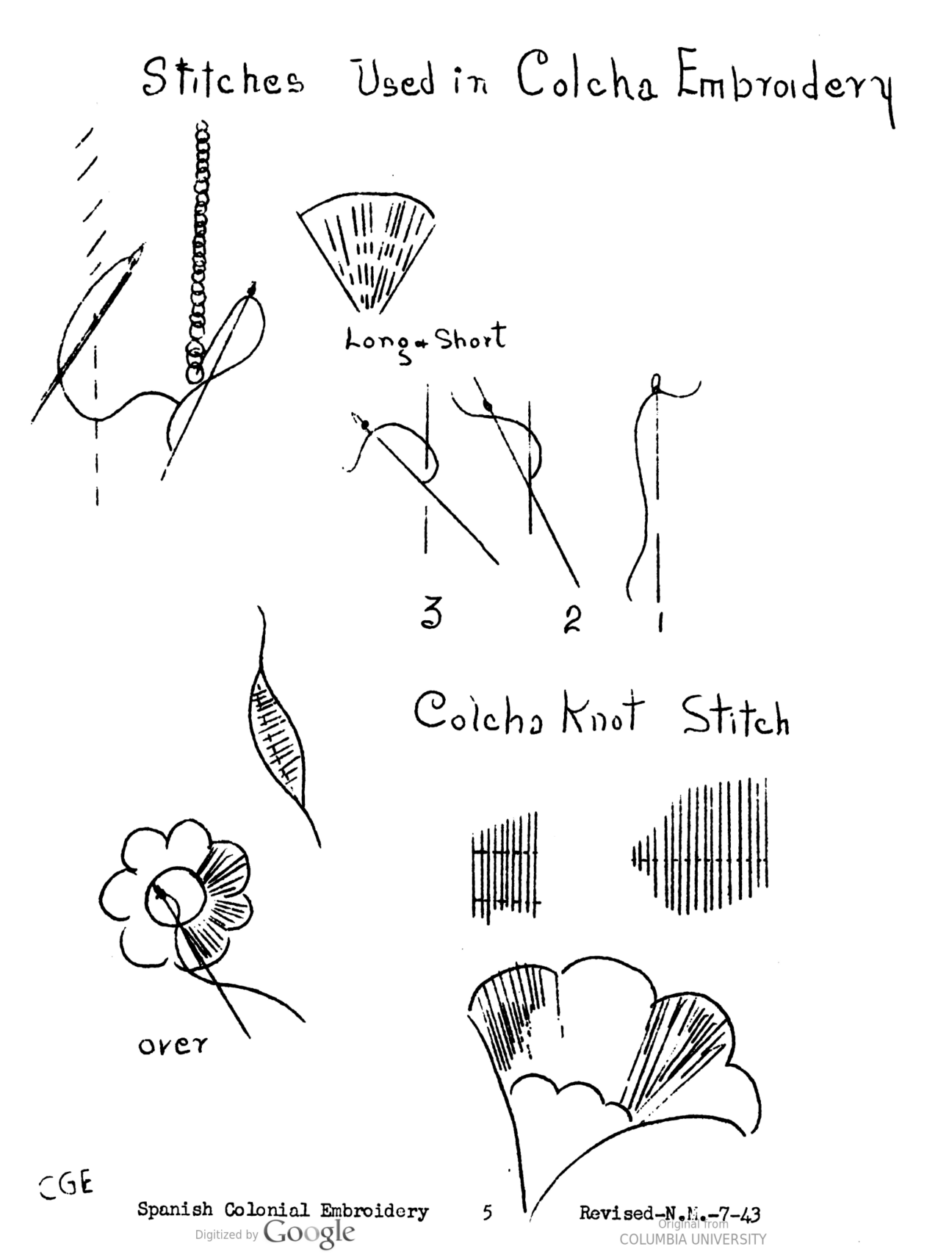

Particular motifs provide hints about the colorful history of Colcha. Early examples include the Tree of Life and pomegranates (Persian) and rose and rose leaf designs (Chinese), as well as zig zag and checked designs. However, many contemporary and even early examples of Colcha embroidery are replete with themes and motifs reflective of Indigenous influence.
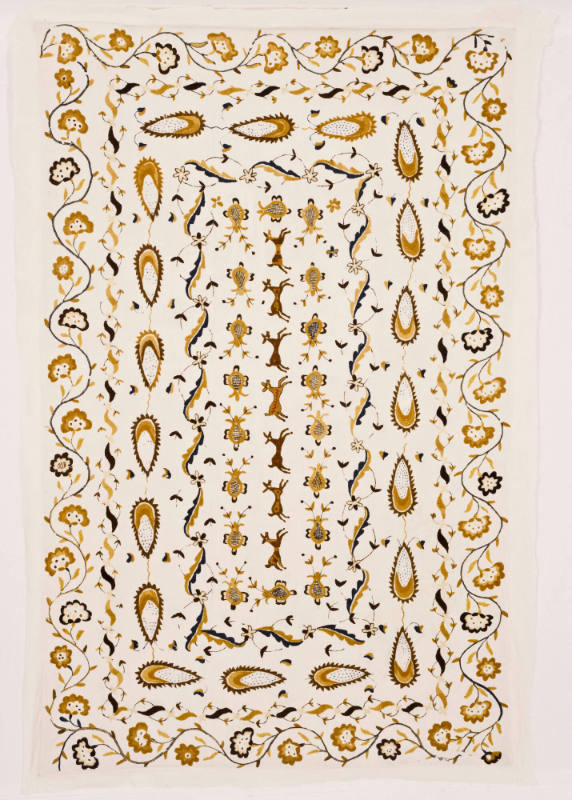
Flora and fauna abound in Colcha embroidery. Deer, sheep, buffalo, roosters and other birds, as well as larger scenes (sometimes religious in nature) can be found throughout Colcha embroidery.
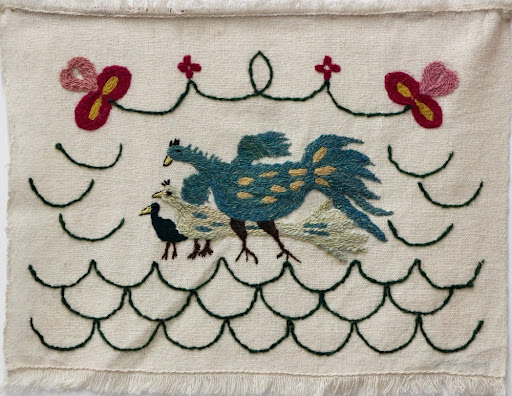
Stitchers interested in exploring Colcha embroidery should explore the resources available from our Sandia Mountains Chapter in New Mexico. The short Colcha Circle documentary below from the University of Nebraska – Lincoln is also an inspiring and uplifting resource.
Colcha Circle: A stitch in Northern New Mexico Culture from EVFAC on Vimeo.
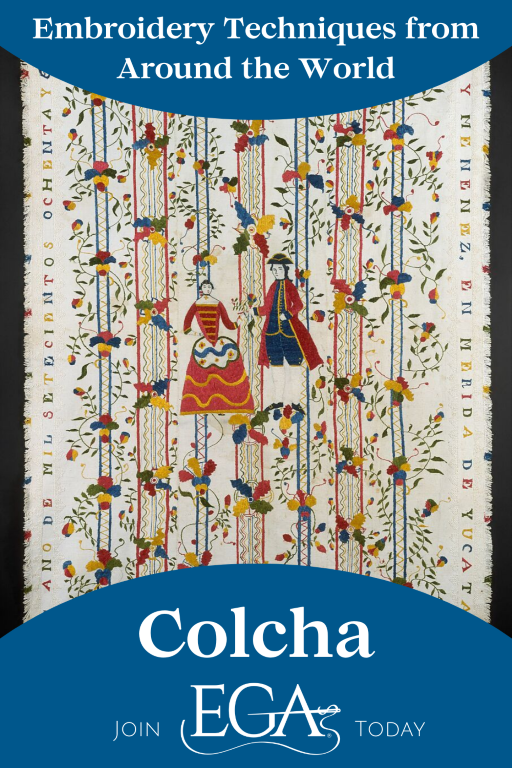
Sources
Bath, V. (1979). Needlework in America : History, designs, and techniques (1st ed.). Viking Press. https://archive.org/details/needleworkinamer1997bath/page/116/mode/2up?view=theater&q=colcha
Perrault, D. (1943). New Mexico colonial embroidery (1st ed.). Columbia University. https://babel.hathitrust.org/cgi/pt?id=nnc1.ar62605046&seq=9
Robinson, L. (n.d.). Colcha: Stitches And Stories. TaoStyle. https://taostyle.net/2019/06/colcha-stitches-and-stories/
(2020). Colcha Circle: A Stitch in Northern New Mexico Culture. Textile Society of America. https://digitalcommons.unl.edu/cgi/viewcontent.cgi?article=2156&context=tsaconf
Brock, K. (n.d.). Colcha: The Embroidered Stories of San Luis. Piecework Magazine. https://pieceworkmagazine.com/colcha-the-embroidered-stories-of-san-luis
Colcha Embroidery. In Wikipedia. https://en.wikipedia.org/wiki/Colcha_embroidery


